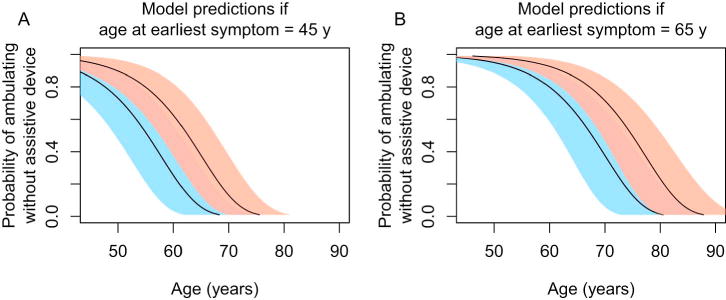Figure 2.

Predicted probabilities of ambulating without assistive device by age.
The final time-to-event statistical model was used to generate predicted probability curves for ambulating without assistive device by age. The solid line and pink shaded regions show the predicted probabilities and 95% pointwise confidence intervals if hip flexion MRC grade is ≥ 4. The solid line and blue shaded regions show the predicted probabilities and 95% pointwise confidence intervals if hip flexion strength MRC grade is ≤ 3. Panel A demonstrates the predicted probabilities if age at earliest symptom is assumed to be 45 y. Panel B demonstrates the predicted probabilities if age at earliest symptom is assumed to be 65 y. All illustrated curves assume a history of blepharoptosis surgery. The plots show that marked hip flexion weakness and younger age at symptom onset are each associated with greater probability of using an assistive device at a younger age. MRC=Medical Research Council.
